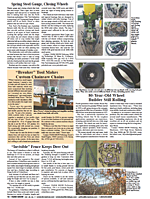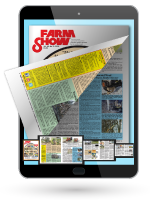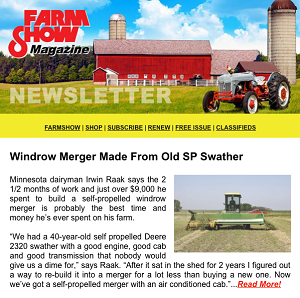You have reached your limit of 3 free stories. A story preview is shown instead.
To view more stories
(If your subscription is current,
click here to Login or Register.)
Transforming Agricultural Waste Into Packaging
University of Queensland’s Dr. Nasim Amiralian and her team of researchers have found a novel use for sugarcane waste. They’re turning the nanofibers extracted from biomass residue into sustainable green products, including a new type of bio packaging that incorporates antimicrobial materials, also derived from biomass
..........
You must sign in, subscribe or renew to see the page.

You must sign in, subscribe or renew to see the flip-book
Transforming Agricultural Waste Into Packaging
University of Queensland’s Dr. Nasim Amiralian and her team of researchers have found a novel use for sugarcane waste. They’re turning the nanofibers extracted from biomass residue into sustainable green products, including a new type of bio packaging that incorporates antimicrobial materials, also derived from biomass waste, to kill viruses and bacteria and help extend the shelf life of grocery store produce.
Sugar comprises only 15% of the sugarcane plant, so a large portion of the stalks and fiber typically becomes waste.
Amiralian’s research began with a goal of finding a use for this large amount of discarded biomass.
“We have a lot of sugarcane waste in Australia,” Amiralian says. “The process we’ve developed is single-step, cost-effective and simple. It’s a good alternative for paper-based packaging, with improved mechanical properties without the need for the addition of plastics or non-biobased moisture-repellent materials.”
She explains that the building blocks of plants are very thin, strong, long fibers, which are used as an additive to improve the mechanical properties of various polymers. At the same time, these nanomaterials, nanofibers, are used as a template to introduce desirable functionality into fiber-based packaging materials, significantly improving the shelf life of foods and fruits and creating antimicrobial packaging.
When the new packaging is used, if someone with the flu touches it, the next person handling it won’t become sick, as the antimicrobial materials kill bacteria, COVID and Influenza A, in less than 30 min.
“Agricultural waste-based packaging is a sustainable alternative to plastics, as it repurposes residues that would otherwise be discarded, reducing greenhouse gas emissions and reliance on fossil fuels,” Amiralian states. “Unlike conventional plastics, it’s biodegradable and doesn’t generate harmful microplastics, making it safer for the environment and human health. This approach supports a circular economy by turning waste into value while promoting cleaner, greener production systems.”
Amiralian hopes the antimicrobial-coated packaging will be on grocery shelves within four years. Her team is also investigating other biomass waste to make 100% biobased and biodegradable packaging materials. They’re seeking investors to advance the technology to the next level of commercialization.
“Going forward, it’s hoped that we can demonstrate translation of our lab-scale formulation to the real-world application and create impact by reducing waste, carbon emissions and plastic pollution.”
Contact: FARM SHOW Followup, Dr. Nasim Amiralian, Australian Institute for Bioengineering and Nanotechnology, The University of Queensland, St. Lucia, QLD, 4072 Australia (www.aibn.uq.edu.au).
To read the rest of this story, download this issue below or click
here to register with your account number.





